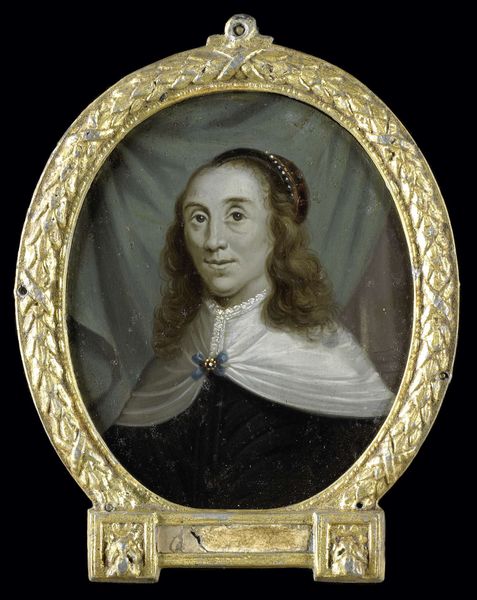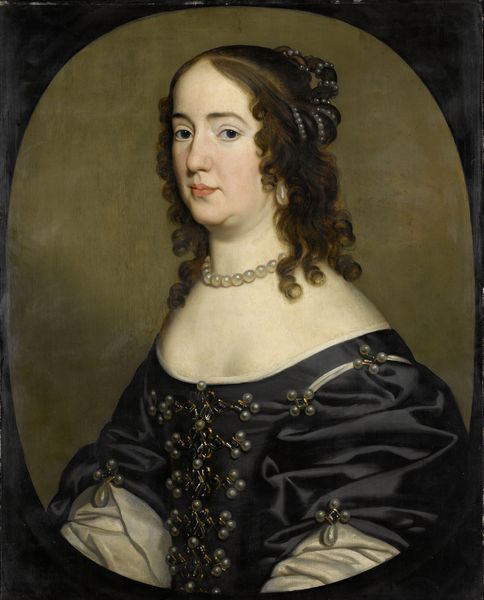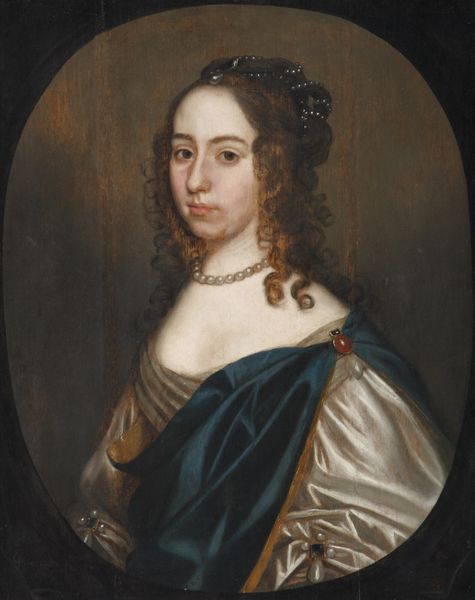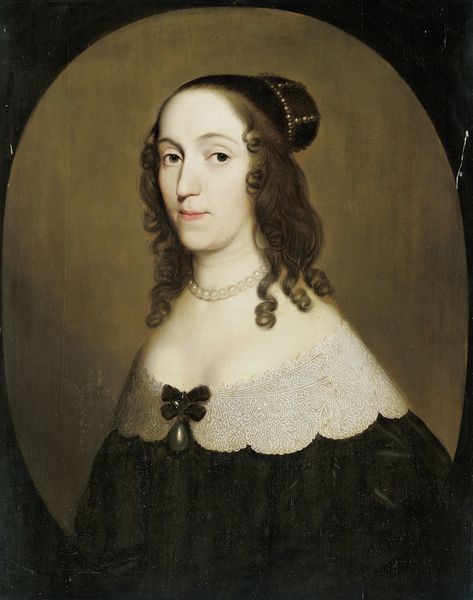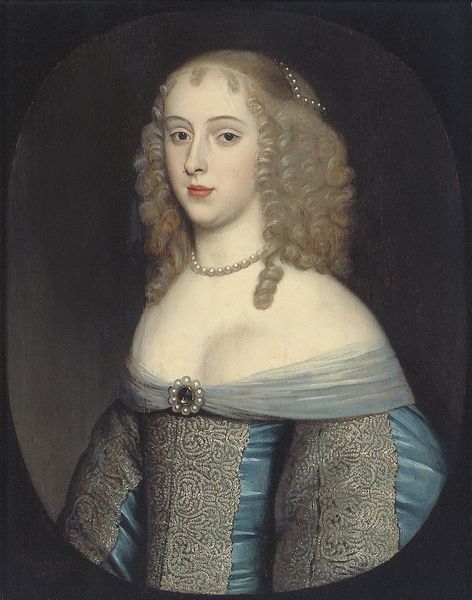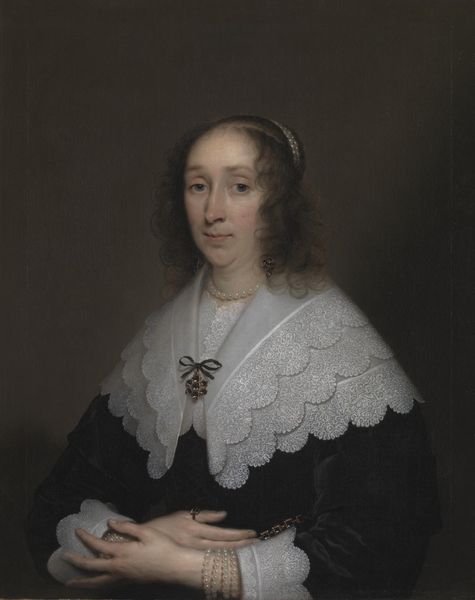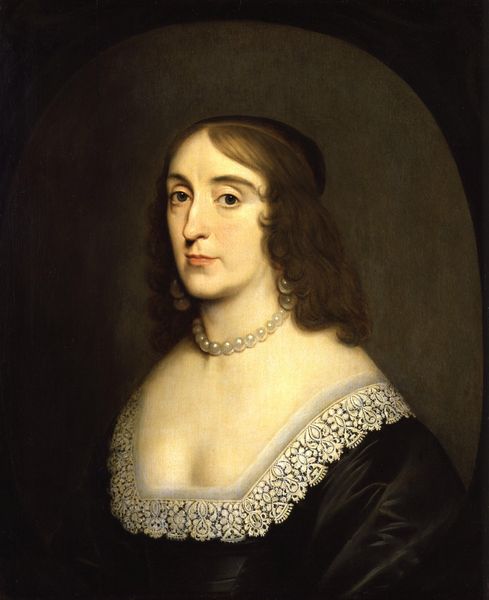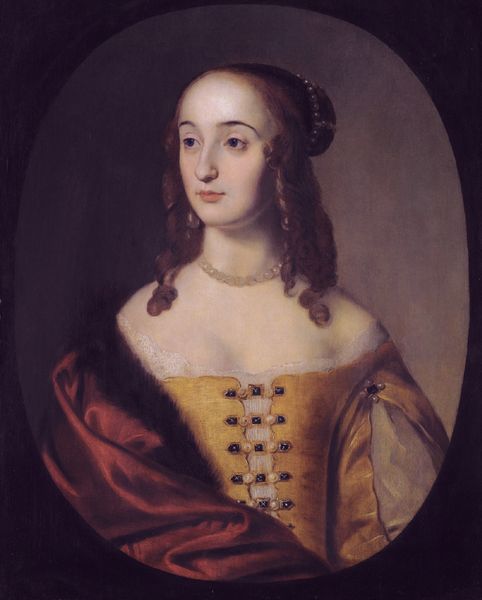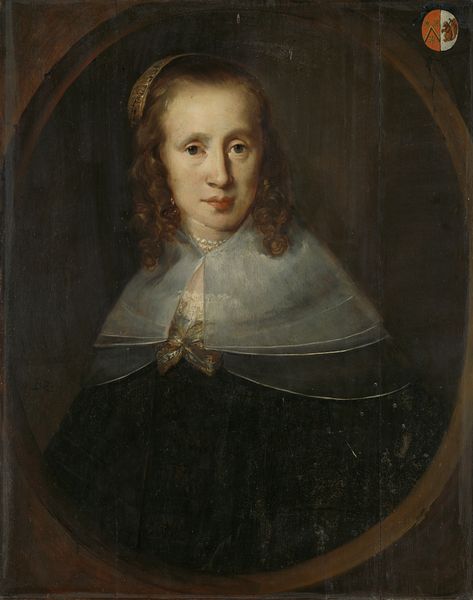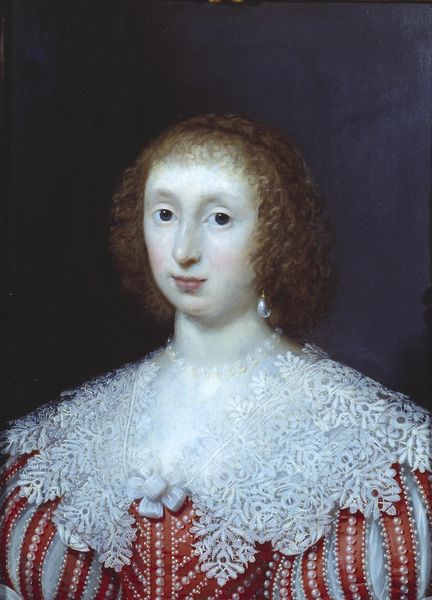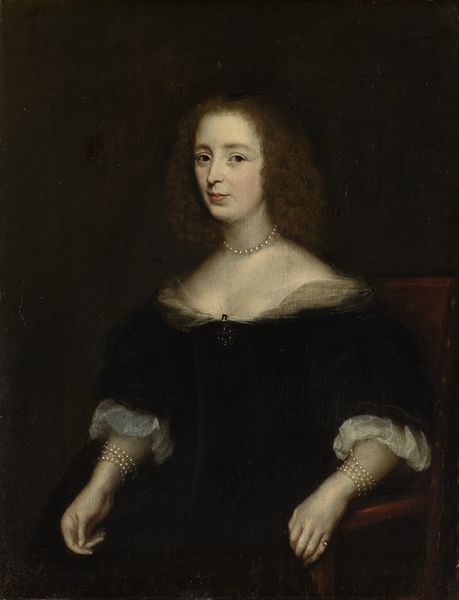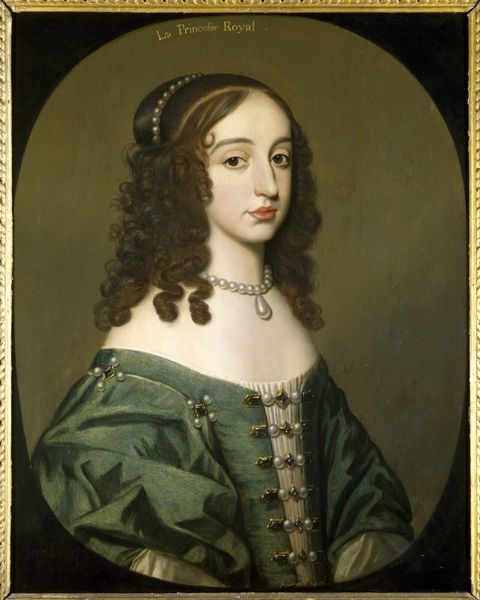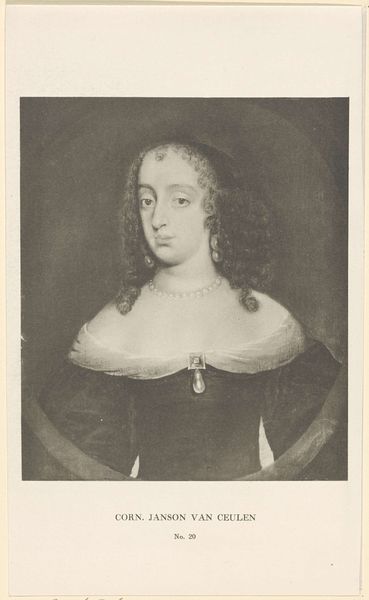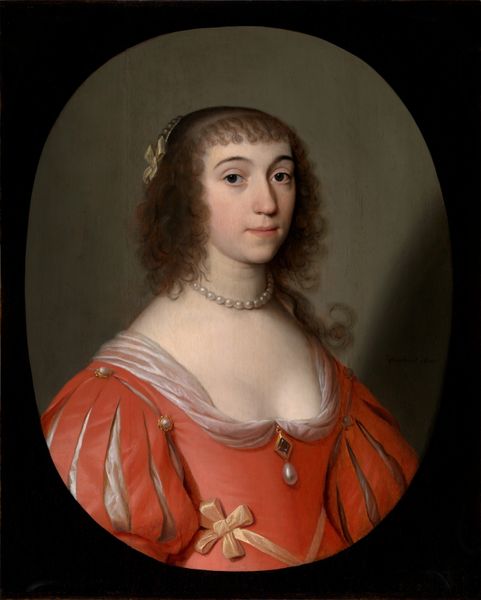
painting, oil-paint
#
portrait
#
baroque
#
painting
#
oil-paint
#
genre-painting
#
realism
Copyright: Public domain
Editor: This is Gerard van Honthorst's "Anna Van Den Corput," painted in 1639 with oil. It feels very formal and reserved to me. The subdued tones contribute to a sense of dignity and maybe even distance. What does this portrait convey to you? Curator: This piece reflects the growing importance of individual portraiture in the Dutch Golden Age, tied to the rise of a powerful merchant class. It goes beyond mere representation. Consider the clothing. This lace isn’t just decoration; it signals a certain social standing. The painting acts as a declaration of status. Think about how the placement in the home served as a symbol of the family's prestige. How does knowing this alter your initial interpretation? Editor: It does make me reconsider my initial thoughts. I still feel the reserve, but I see that it is not necessarily the personality of the subject but instead is shaped by these established codes and societal expectations. Did people at the time recognize the social messaging embedded in the paintings like this one? Curator: Absolutely. These visual cues were readily understood. It’s fascinating how Honthorst utilizes realism not only to capture likeness but also to participate in constructing a certain public identity for his sitter within a complex social framework. Portraits are as much about the display of wealth and position as about capturing a person’s image. Editor: This discussion made me aware of just how deeply social structures influenced even something as seemingly personal as portraiture. Thank you for your explanation! Curator: It’s a testament to how even individual portraits are so deeply intertwined with the social fabric. A pleasure to share this perspective.
Comments
No comments
Be the first to comment and join the conversation on the ultimate creative platform.
